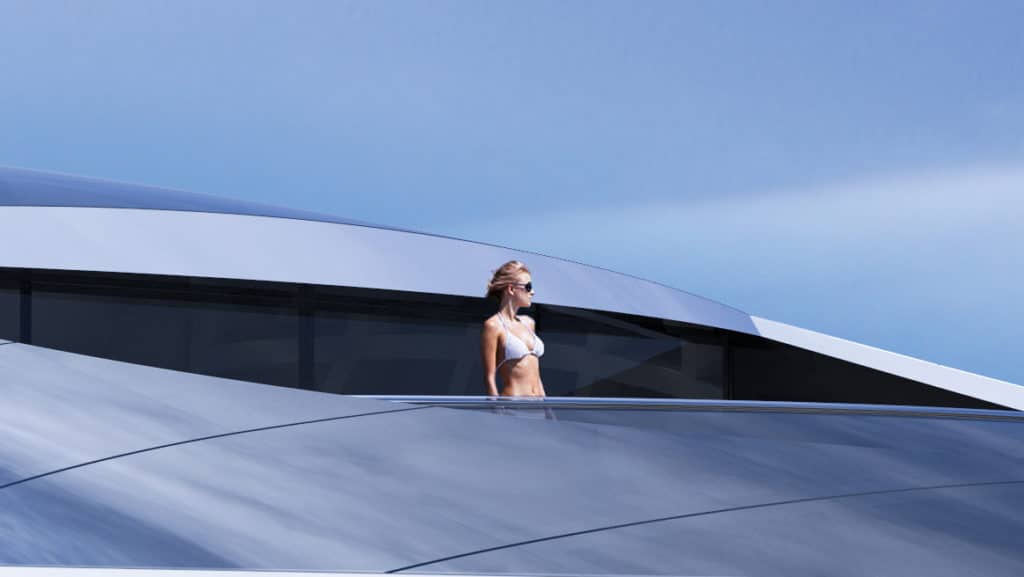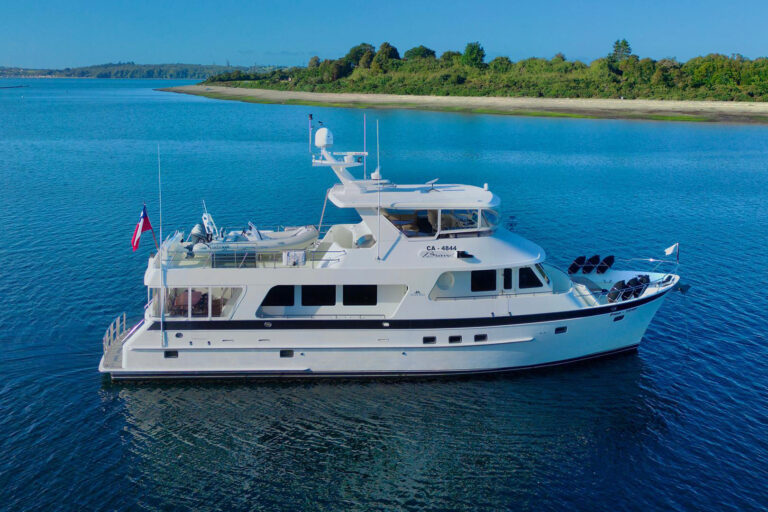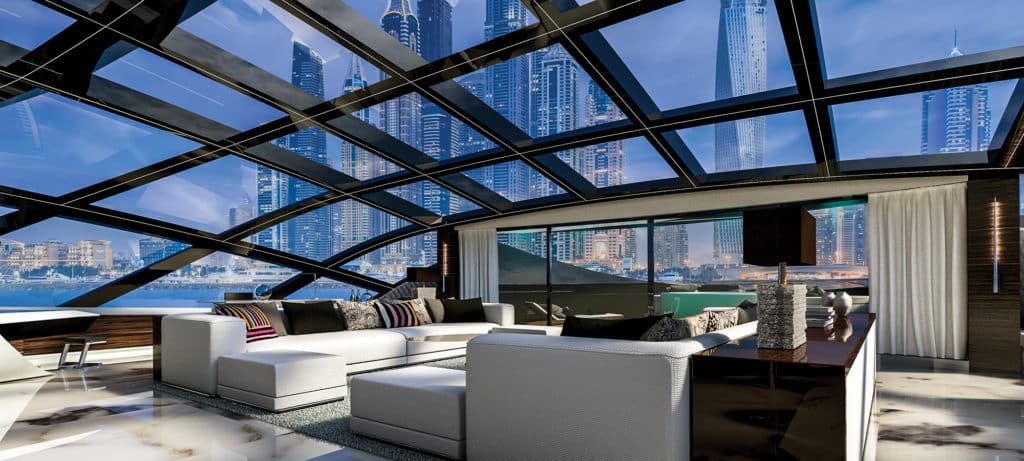
In 2006, apple wowed even jaded New Yorkers with the entrance to its flagship store on Fifth Avenue. A glass square, aka “the cube,” measuring 32 feet long on each side framed the entryway. Ninety frameless, monolithic glass panes sat atop one another. It became one of the most photographed and talked about structural designs in modern history, so much so that Apple patented it.
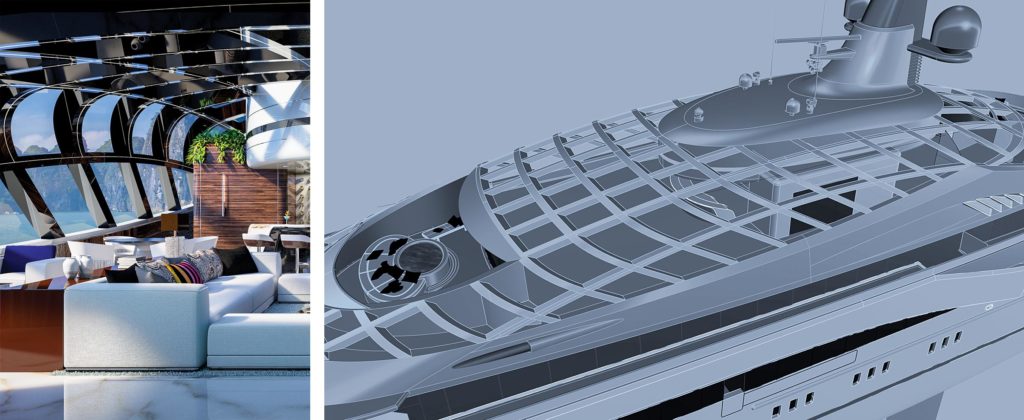
In 2011, the cube was redesigned with far larger — and fewer — panes. Just 15 nearly seamless pieces were used. The second redesign, going on right now, is scheduled for unveiling in 2018. The current advances in structural glass are likely to make even those 6-year-old panes obsolete.
Superyacht owners, designers and boatbuilders are imagining their own possibilities with structural glass, which can support some physical loads at sea too. Owners want greater indoor-outdoor ambience, so a few shipyards and studios have put structural glass into practice, challenging convention and classification societies alike.
Arguably — and perhaps not surprisingly — the most readily recognizable yacht with structural glass is Venus. Delivered by Feadship in 2012, the 257-footer has “pavilion windows” measuring 33 feet long and 8 feet high. The idea came collectively from Feadship, designer Philippe Starck and the yacht’s late owner, Apple co-founder Steve Jobs.
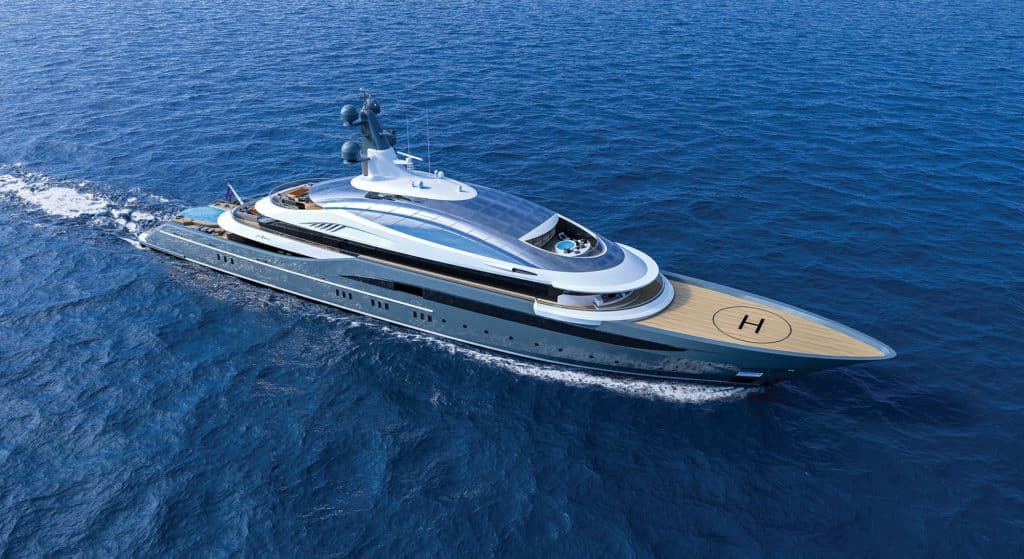
Feadship had been researching large glass panels since 2006, and its first Future Concept design, X-stream, had an all-glass superstructure plus a glass bow observation area. Still, however, Venus’ windows were hurdles. First, Feadship needed to find a glass specialist capable of engineering them. It turned to Eckersley O’Callaghan, a U.K.-based engineering design consultancy that has worked on, among other projects, the Apple Store entrances. On Venus, the firm determined how to curve the glass to follow the yacht’s lines. It then coated the glass to lend a semblance of privacy to guests inside while still allowing them to enjoy the all-around views.
“As complex as glass walls are, how about a glass dome? Designer Luiz de Basto created one as the centerpiece of a concept called Cosmos, ready for contract at Oceanco.”
Challenge number two on Venus was testing the glass. Typically, full-scale yacht windows get tested via water pressure at purpose-built facilities, but none could accommodate the dimensions of these windows. In addition, the panes are connected on just one side, plus they sit on a couple of supports. Even though computer models predicted the design would hold, Feadship could only prove it once Venus launched.
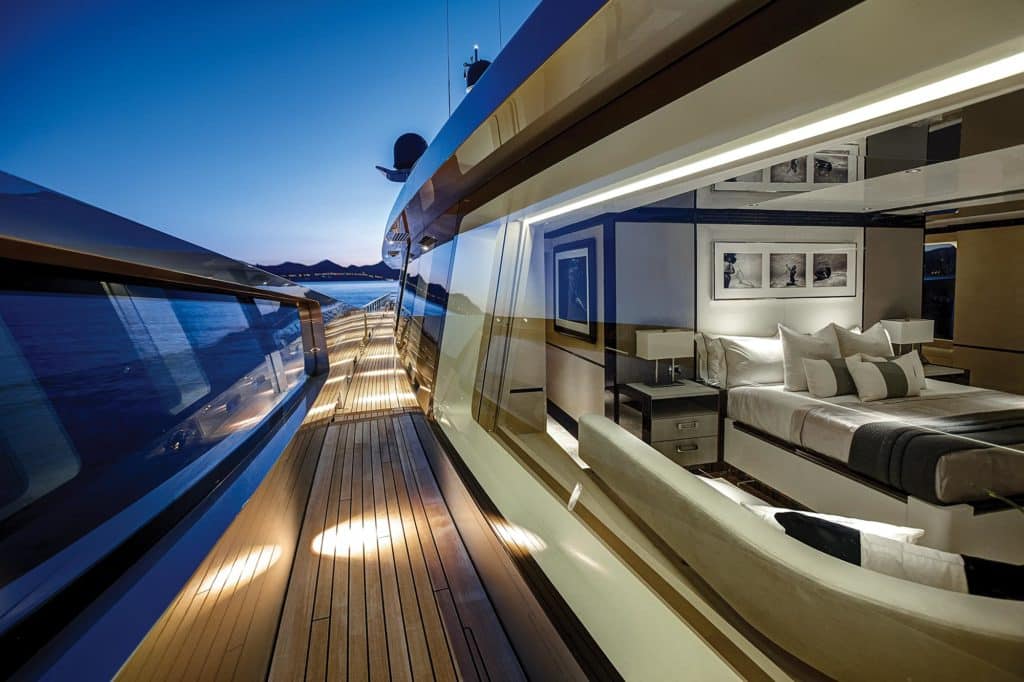
“We could measure actual hull deflection with the tank loading centered and completely to the ends,” says Bram Jongepier, Feadship’s manager of knowledge development. As for proving the computer models were correct, he adds, “We were able to replicate the results of the tests to an accuracy of 10 to 15 percent — an impressive figure for such an extraordinarily complex product.”
And as complex as glass walls are, how about a glass dome? Designer Luiz de Basto created one as the centerpiece of a concept called Cosmos, ready for contract at Oceanco. Ever since he saw the Apple Store cube in 2011, de Basto says he hasn’t been able to stop imagining what structural-glass design could look like in his yachts.
“There are a lot of concepts out there, but they don’t advance anything,” he says. “They’re science fiction, not reality. I don’t just want to make balanced lines. I’m trying to really go after lifestyle, propose new ways of going out and enjoying nature.”
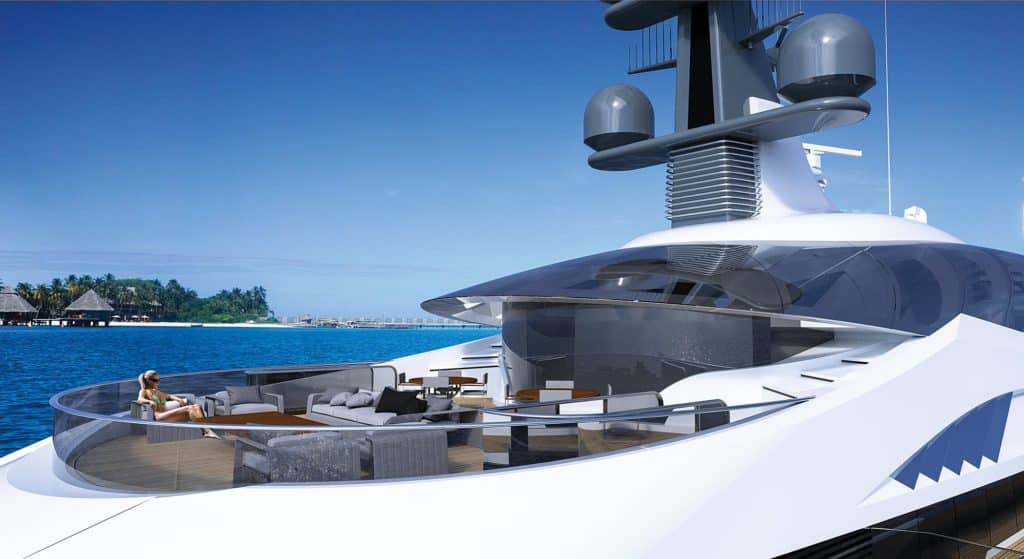
The dome aboard the 295-foot Cosmos makes that goal abundantly clear (no pun intended). Guests get nearly uninterrupted views from within an all-around glass arc on the uppermost deck. It incorporates 86 glass panes, some curved and others triangular. Created in consultation with Eckersley O’Callaghan, the space is part of what de Basto and Oceanco call the yacht’s “sky deck.” Guests would feel as if they could reach out and touch starry skies or skyscrapers, all the while being inside. Not to mention, during the day, the glass reportedly blocks about 70 percent of ultraviolet rays.
While the main structure of the sky deck is an aluminum grid, the glass is also structural. Through several design iterations, de Basto and Oceanco were able to enhance the dome and reduce the beams. Oceanco’s technical department strenuously analyzed all the components, de Basto says. It also ensured that Cosmos would be class compliant.
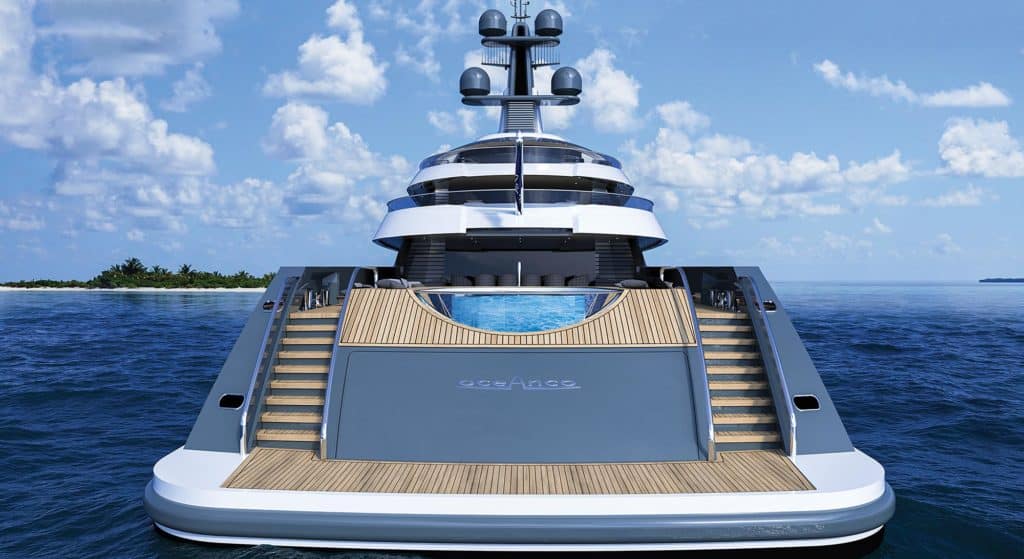
“Class societies want proof of concept,” as do shipyards, designers and owners, he says. “If it’s not breaking the laws of physics, it’s possible to do.”
Considering that the autoclaves required to cure glass panels these sizes didn’t exist a decade ago, the future holds great promise. That said, Feadship is in talks with designers and customers. And de Basto, too, is convinced that structural glass will become more prevalent.
“There’s a demand for that,” he says. “My job as a designer is to find these lifestyle solutions and make them possible. Glass is a big part of that.”
On its website, Eckersley O’Callaghan states: “At the height of modernism, architects borrowed extensively from the marine world to shape their buildings. Today, marine designers are paying back the compliment by borrowing architects’ techniques for the latest yacht designs.” While it’s safe to say we probably won’t see a floating Apple Store cube anytime in the near future, perhaps we will see superstructures that are nearly all glass.
Somewhere, Steve Jobs is smiling.
